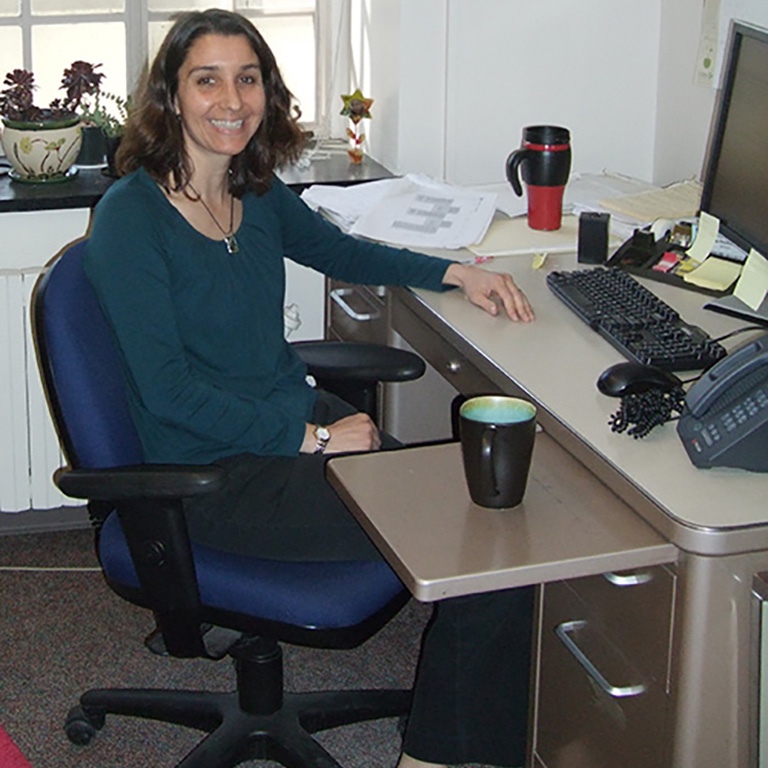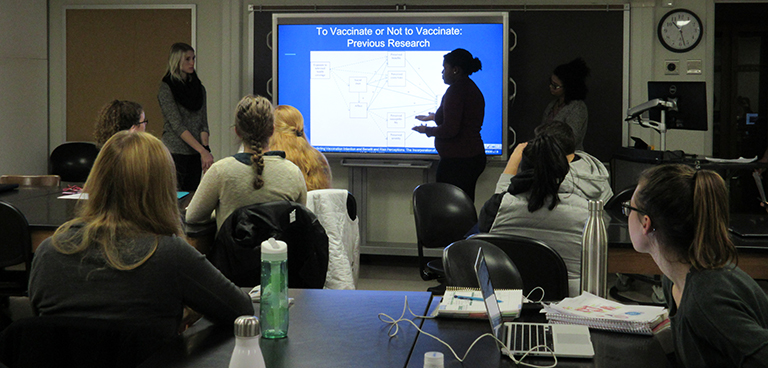We were fortunate to receive a Summer Instructional Development Fellowship from IU’s Center for Innovative Teaching and Learning, which allowed us the time in the summer to focus on designing this new course. The major focus of the course would be infectious diseases. In the first unit of the course, we would use the development of germ theory, or the view that many diseases are caused by microorganism, as both an exemplar of the scientific method and a window into past and current society. Using cholera as a case study, we introduced epidemiological, eco-evolutionary and biomedical approaches to studying disease. Students examined John Snow’s famous data from the London cholera epidemics of mid 1800’s and discussed data from Haiti’s 2010 cholera outbreak. To further develop their understanding of the scientific method, students designed and carried out their own experiments to test their own hypothesis about microbes in their environment. Students then went on to explore the mathematical models of how diseases spread in a population and how these models can be used to predict the effectiveness of vaccination. We also discussed historical examples of vaccination and quarantine to grapple with the ethics applying straightforward scientific ideas to human society.
With these course themes under our belts, our next unit further developed these concepts by focusing on the most impactful of recent epidemic—HIV/AIDS. We explored the biology of the immune system to understand how HIV leads to AIDS, how anti-HIV drugs work, and the principles that allow us to quickly test for HIV infection. In labs we focused on how contact tracing can pinpoint the source of a local outbreak and how variation in human behavior complicates predictions of how disease spreads in a population. Using evolutionary methods, we examined how HIV entered the human population, how genetic data could be used in forensic cases, and how resistance evolves. Dr. Maglen also led us in an historical analysis of how the US, the UK, and South Africa each responded and to HIV/AIDS epidemics and the fascinating insights we could gain into each society. The class also had a visit from a case worker from IU Health Positive Link, who gave us first-hand account of the recent HIV outbreak in Scott County, Indiana. In an exciting partnership, honor’s HUBI students in S200 also developed several infographics and a video to help Positive Link in their mission.
In the final unit of course, we applied the scientific and historical analysis tools we developed in the first two units to the non-infectious epidemics of obesity and cancer. Additionally, a majority of student time was spent working on their team research projects. As key component of any HUBI class, collaborative learning was incorporated throughout the course in most class discussion and lab assignments. In the team projects, students delved into a specific disease over the course of the semester, examining both the historical and scientific scholarly literature to make and present their own ideas on the disease. These projects were presented to the class and community in a public poster session in the last week of the semester. All-in-all I felt our new B200 worked to provide strong foundation in the methods, and difficulties, of applying science for our Human Biology majors. I thank Dr. Maglen for opening a new world of inquiry for me and I would like to recognize the awesome team work of our AIs Lindsey Mattern and Jessica Harrison and UTA’s Audrey Smith, Kelsey Blalock, Emily Merritt and Marc Mertsching, without whom our B200 would not have been such a success.





 The College of Arts
The College of Arts